
From the Metropolitian Museum of Art
John La Farge (1835–1910)
The Great Statue of Amida Buddha at Kamakura, Known as the Daibutsu, from the Priest's Garden, 1887
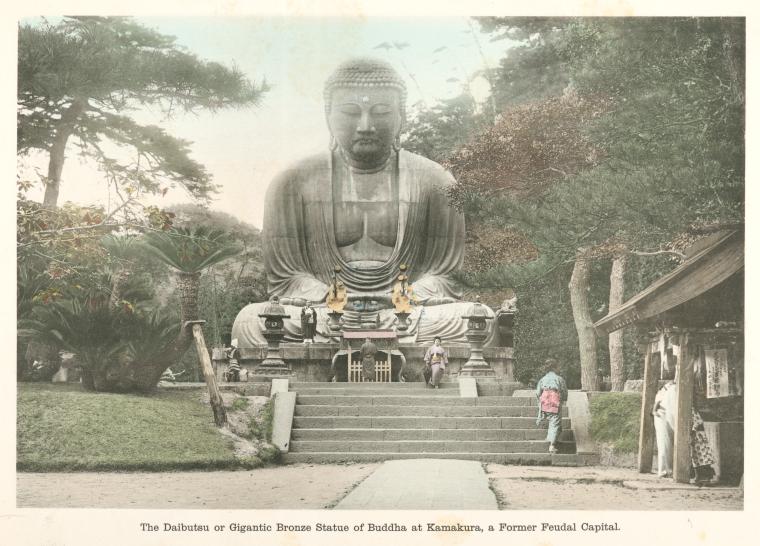
This image is from the collection of the NY Public Library.
Image details are here.
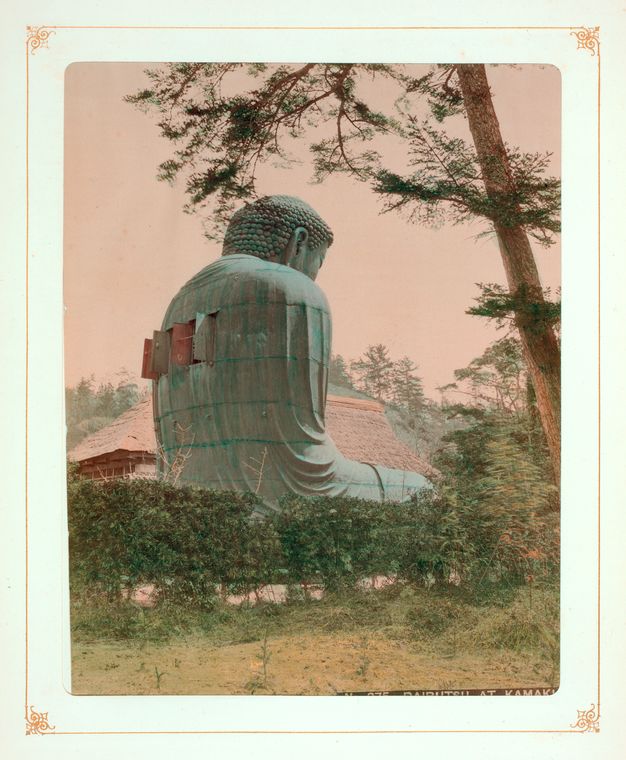
Attribution unknown.
From the NY Public Library
Daibatsu means "large buddha," but the term is often used in the west to refer to that large Buddha because of Rudyard Kipling's poem, "The Buddha at Kamakura." It's a fun read- you can really hear how much Kipling likes the word Kamakura.
The Buddha at Kamakura
O ye who tread the Narrow Way
By Tophet-flare to Judgment Day,
Be gentle when the 'heathen' pray
To Buddha at Kamakura!
To him the Way, the Law, apart,
Whom Maya held beneath her heart,
Ananda's Lord, the Bodhisat,
The Buddha of Kamakura.
For though he neither burns nor sees,
Nor hears ye thank your Deities,
Ye have not sinned with such as these,
His children at Kamakura.
Yet spare us still the Western joke
When joss-sticks turn to scented smoke
The little sins of little folk
That worship at Kamakura --
The grey-robed, gay-sashed butterflies
That flit beneath the Master's eyes.
He is beyond the Mysteries
But loves them at Kamakura.
And whoso will, from Pride released,
Contemning neither creed nor priest,
May feel the Soul of all the East
About him at Kamakura.
Yea, every tale Ananda heard,
Of birth as fish or beast or bird,
While yet in lives the Master stirred,
The warm wind brings Kamakura.
Till drowsy eyelids seem to see
A-flower 'neath her golden htee
The Shwe-Dagon flare easterly
From Burmah to Kamakura,
And down the loaded air there comes
The thunder of Thibetan drums,
And droned -- "Om mane padme hums" --
A world's-width from Kamakura.
Yet Brahmans rule Benares still,
Buddh-Gaya's ruins pit the hill,
And beef-fed zealots threaten ill
To Buddha and Kamakura.
A tourist-show, a legend told,
A rusting bulk of bronze and gold,
So much, and scarce so much, ye hold
The meaning of Kamakura?
But when the morning prayer is prayed,
Think, ere ye pass to strife and trade,
Is God in human image made
No nearer than Kamakura?
---
It turns out that God in human image was made nearer- or at least bigger- than in Kamakura: there's a larger one at Nara, and in Japan when people use the word daibutsu, that's the one they mean.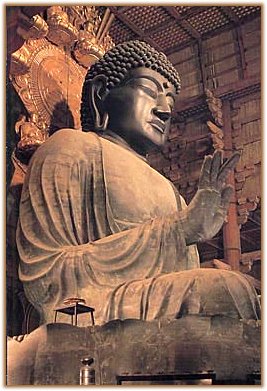
The biggest ancient daibutsu in Japan, though, is at Nihon-Ji.
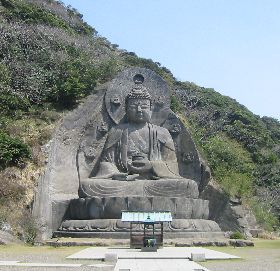
I love the old photographs of these giant buddhas. Here's one from Hiogo Japan.
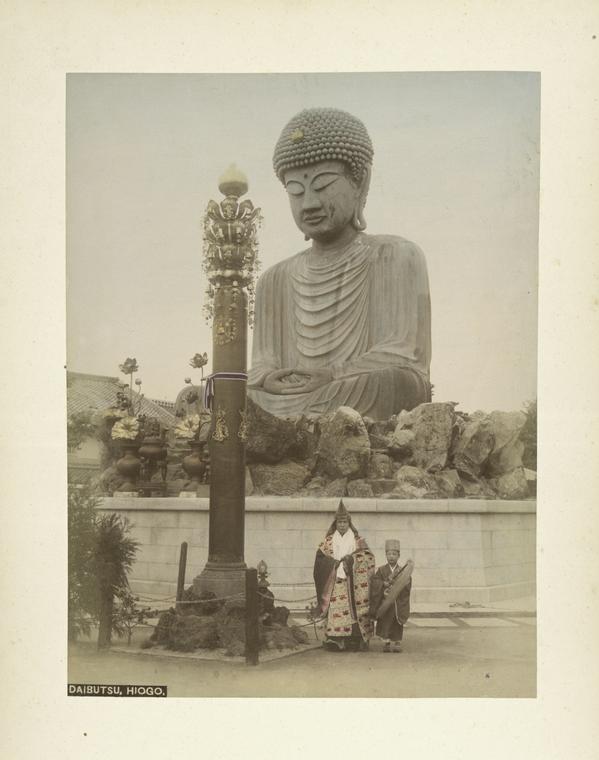
Image details from the NYPL
An unfinished Buddha from Sumatra.
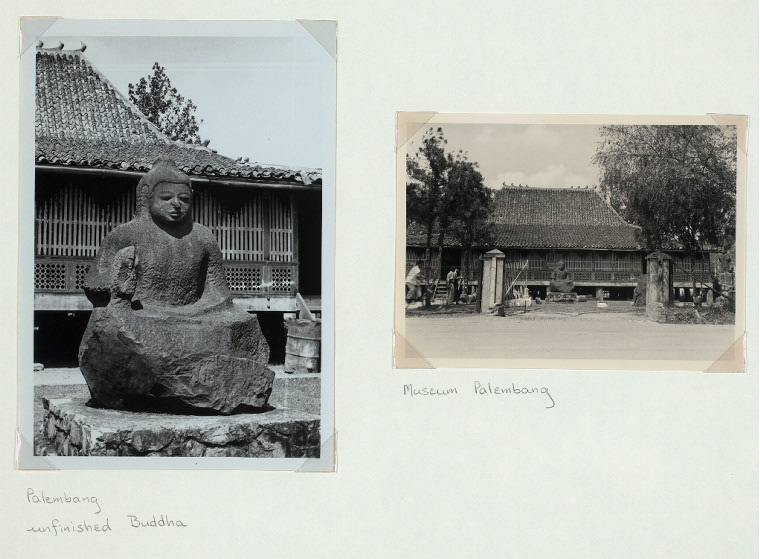
Image details from the NYPL
And an Indonesian giant buddha.
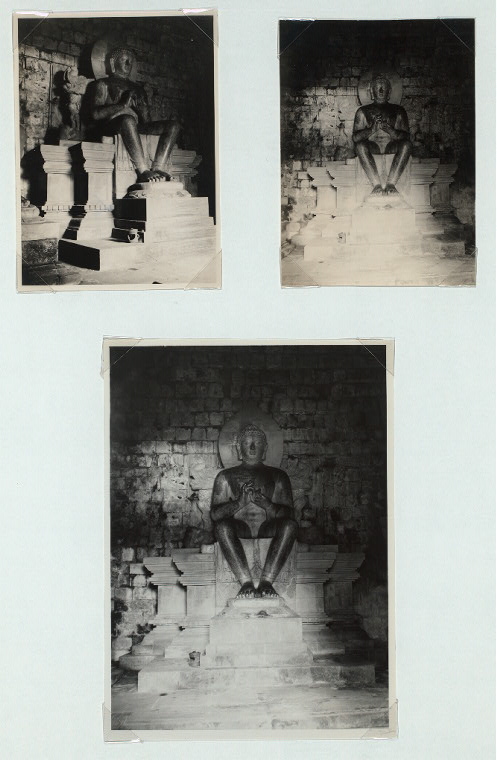
Image details from the NYPL
There are more images of the Kamakura Buddha here, and you can see more daibutsu pictures here.
There's also a crazily beautiful and incredibly dopey photograph of someone pretending to be a daibutsu in the NYPL collection.
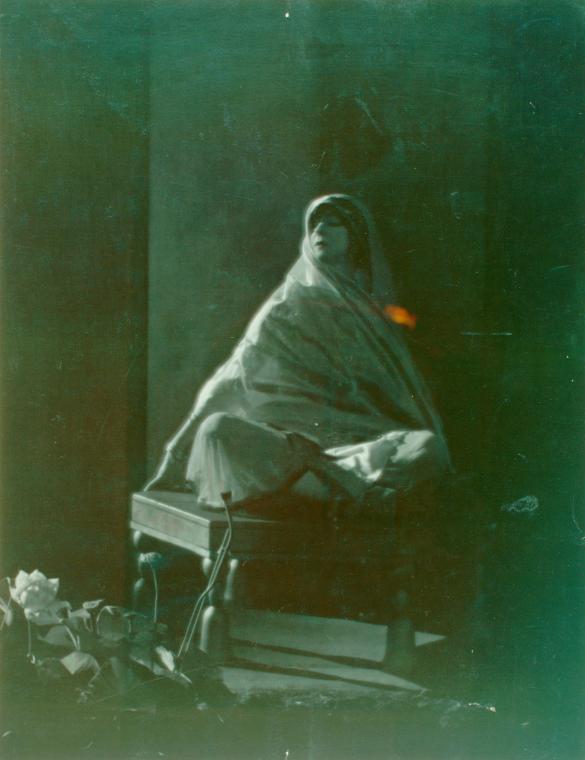
The kicker comes in the caption:
"Ruth St. Denis in Light of Asia, a religious drama given at the Krotona Theosophical Society with Walter Hampden as Buddha."
Jeez, Walter.
The most beautiful images I found are from the NY Public Library's incredible digital image collection, which is so vast and great I'm never, ever, going to be able to stop looking at it. Eventually I'm going to fall asleep in a puddle of drool with my eyeballs glued to my computer screen.
But even if I look really good doing it I will not assert my resemblance to this guy.
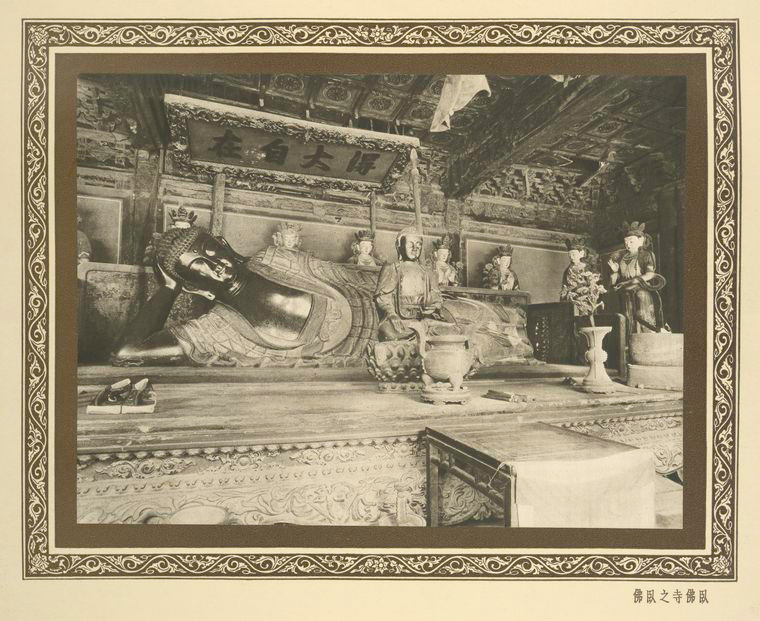
The Sleeping Buddha of Wo Fu Ssû in Beijing. From the NYPL.
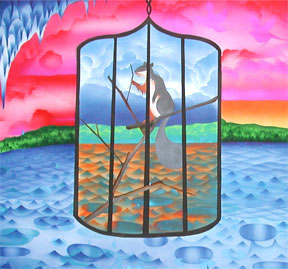
2 comments:
The Kipling reminds me of Gilbert & Sullivan. By the way, see TOPSY TURVY if you haven't already -- wonderful imagining of the creative process behind THE MIKADO.
You know, somehow I missed Gilbert and Sullivan when I was growing up. It's weird, because there are so many references to them that I can identify, but I have no idea, really, what they're talking about. I think the Kipling is interesting; when I first read it I thought it was typical goofiness of the time, but I think he was trying, actually, to resist that vision. (Plus every time I read it I think that he secretly authored the "Kookaburra sits in the old gum tree" song.)
Post a Comment